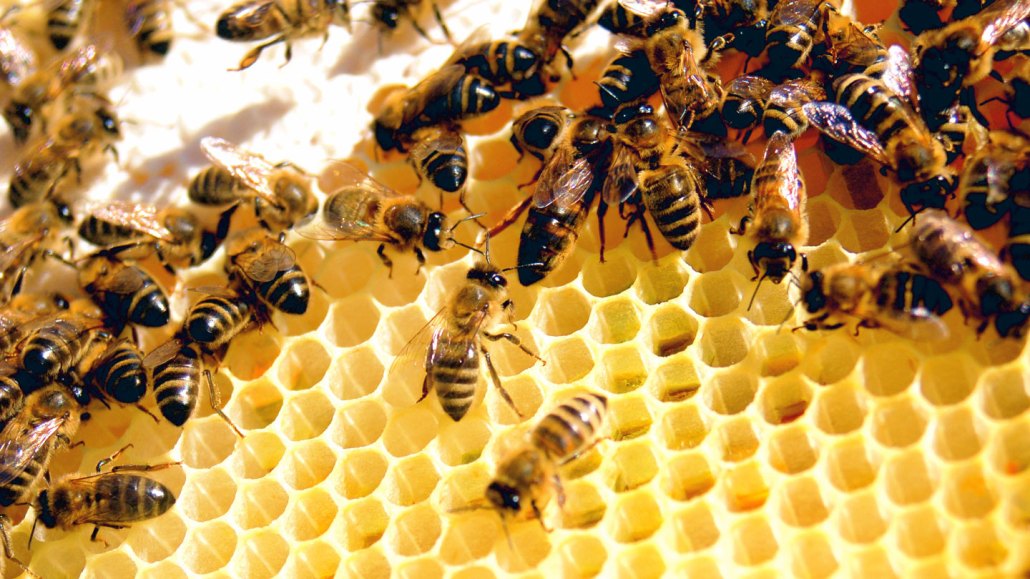Questions for ‘Bees and wasps devised the same clever math trick to build their nests’

The nests of honeybees consist of mostly six-sided cells made from wax. Adding pairs of five-sided and seven-sided cells help fit large and small hexagons together.
Todd Huffman/Wikimedia Commons (CC BY 2.0)
Share this:
- Share via email (Opens in new window) Email
- Click to share on Facebook (Opens in new window) Facebook
- Click to share on X (Opens in new window) X
- Click to share on Pinterest (Opens in new window) Pinterest
- Click to share on Reddit (Opens in new window) Reddit
- Share to Google Classroom (Opens in new window) Google Classroom
- Click to print (Opens in new window) Print
To accompany ‘Bees and wasps devised the same clever math trick to build their nests’
SCIENCE
Before Reading:
- Using straight lines, sketch the shapes and partitioning that come to mind when you imagine a “honeycomb.” What do you think the purpose is of these partitions for insects?
- Imagine you are installing a new tile floor in your kitchen. When the tiles arrive, you realize they are the same shape but are two different sizes. Why will having two differently sized tiles make the tiling process harder than if the tiles were all the same size? Add to your sketch from the first question to create an example of the tiling problem described.
During Reading:
- As bee and wasp colonies grow, what problem must they address regarding their nests? Why do bees and wasp colonies face this problem?
- Why do bees and wasps use occasional five-sided and seven-sided cells in their nest-building?
- From what material do honeybees construct their hexagonal cells? From what material do wasps construct their cells?
- How many species of bees and wasps did Michael Smith and his team study?
- What two types of data did scientists extract from nest images using image analysis tools? (Answer if you can: Are these measurements considered dependent variables or independent variables in the study? Why do they fit in that category?)
- One unique aspect of this study was the inclusion of measurements for “irregular” cells. Why had previous studies ignored irregular cells?
- Researchers discovered that bees put down alternating pairs of five-sided and seven-sided cells at the transition between larger and smaller cells. How many open sides are present in a shape-duo consisting of one five-sided shape and one seven-sided shape? How many open sides are present in a shape-duo of two six-sided shapes?
After Reading:
- Bees and wasps are not close relatives in an evolutionary sense. (They diverged about 179 million years ago!) Despite their differences, they both use the same geometry trick to solve the nest-building problem. When unrelated species both come up with the same solution for solving similar problems, scientists call it “convergent evolution.” Consider what it means to “converge,” then explain why this term accurately describes the phenomenon in this story. Come up with another example of convergent evolution and explain how your example depicts dissimilar species solving similar problems in similar ways.
- An analogy is a literary device that explains an unfamiliar concept by saying it is similar to some other concept that is more familiar. This story uses an analogy of tiling a floor. Explain how this analogy helps the reader understand a problem bees encounter when nest-building.
- Analogies are powerful tools. However, if not careful, they can give rise to misconceptions. The reason: While analogous concepts are similar, they still have differences. However, taking note of the analogous concepts’ differences can help address this potential problem. Identify one difference between the analogous concepts presented in this story — tiling a floor and building a beehive — that could confuse a reader.